On my farm in Kodaikanal, bugs have been ‘signallers’: fireflies in August meant it was going to be a superb monsoon, aphids meant my neighbours had been spraying pesticides, and the literal 1000’s of winged termites that might hover beneath each lightbulb in my home, only for a number of days yearly, meant the monsoon was beginning.
I ought to have understood, when each creature from ants to my cats and canines ate the termites that had fallen to the bottom, their wings singed by the bulbs, that there was extra to them than met the attention. But it surely was a lot later that I discovered that ‘eesal’ (Tamil for winged termites) was a conventional delicacy, owing to the few days a yr they have been obtainable.
I’m considering of the eesal, curry leaf, mustard and pink chilly poriyal (a sautéed dish) that my neighbour had taught me to make, when Tansha Vohra affords me a chutney at her session on the Previous GMC Complicated in Goa. “Coriander, salt, onion, chilly… and pink weaver ants,” she says, including with a smile, “No lime,” simply as I pucker my lips on the tangy sourness of the ants’ formic acid. It’s scrumptious.
Tansha Vohra introducing visitors to edible bugs
| Photograph Credit score:
Courtesy The Boochi Challenge
Vohra, a London-based meals anthropologist and author — and speaker on the latest ‘Imagining Bugs – Rethink Style, Disgust and Delight’ speak at Serendipity Arts Pageant — stumbled upon weaver ants in 2018. She disturbed a nest in a cacao tree whereas attempting to reap cocoa beans, a month into her internship at Rosie and Peter Fernandes’ edible forest backyard in Goa. There was no approach she may attain the fruit with out destroying the nest, and when Fernandes shared they have been edible, she took issues into her personal fingers and harvested her first ‘crop’. The remaining is historical past.
She now recurrently harvests ants. “I’ve discovered them throughout the nation. They nest in nearly any tree,” she says, because the younger man throughout from me takes a tentative spoonful of the chutney. “I’ve even discovered them on ardour fruit vines.” It takes two folks at the least to reap, she provides; you want somebody to catch the rain of ants when you break the nest off the department they connect themselves to. “However that simply means you find yourself introducing another person to the fun of consuming weaver ants.”

Tansha Vohra
| Photograph Credit score:
Courtesy The Boochi Challenge
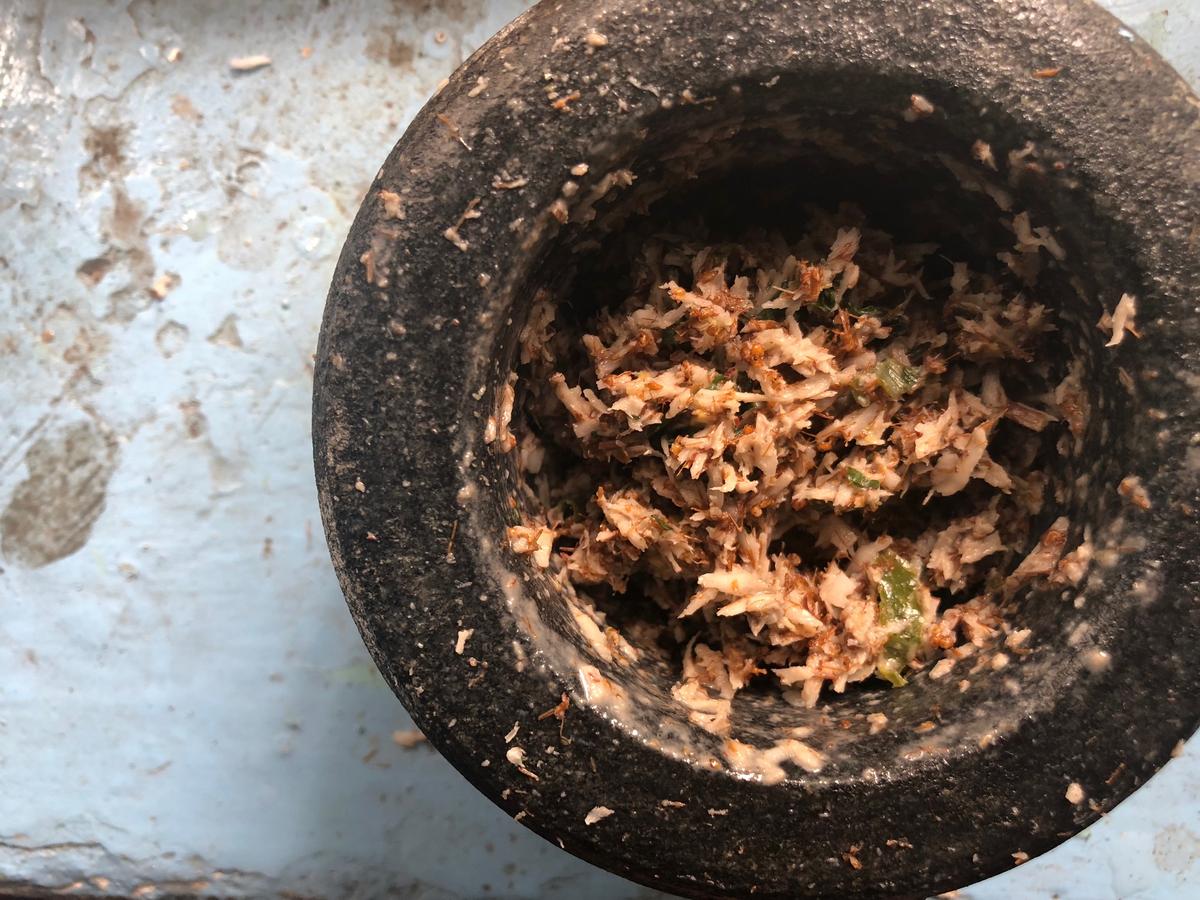
Weaver ant chutney
| Photograph Credit score:
Courtesy The Boochi Challenge
Right now, Vohra retains a bag of ants in her freezer always (freezing them is the easiest way to protect their formic acid), which can sound unusual for somebody who grew up in Bengaluru, and loves going to bookstores and parks, however she is genuinely excited concerning the potential entomophagy, or the observe of consuming bugs, affords for the way forward for humanity. As a fellow permaculturalist, she tells me how it’s a excellent instance of the “drawback changing into the answer”. (Permaculture is a system of designing ecosystems that mimic nature, and goals to scale back waste, enhance biodiversity, and shield wildlife.)
Fernandes, her permaculture mentor, agrees. “Local weather change is a actuality now, and the crops used to feed livestock are being affected by it. The quantity of water, area and assets wanted for the same quantity of protein is drastically diminished when farming bugs,” he says. “Furthermore, the modifications in temperature trigger trauma to livestock, which bugs can simply be insulated from.”
Environmental influence
Fernandes is a convert, too. He began harvesting black soldier fly larvae and weaver ants through the early days of lockdown and, with some on-line assist, now develops his personal recipes. Vohra shares a favorite: “We discovered the fly larvae breeding in a compost heap that was too moist. We fried them with garlic in their very own fats, and served them butterflied like a prawn, which is what they tasted like!”

Peter Fernandes
| Photograph Credit score:
Particular association
Once I deliver up the gross/connoisseur dichotomy that edible bugs discover themselves in, she brings up sushi. “Individuals mentioned the identical issues about sushi at first, and now it’s a world phenomenon. I imagine bugs have that potential. It’s a multi-million greenback business; it’s good for the atmosphere; it’s good for our well being; they usually style nice.” The statistics show her proper: the worldwide edible bugs market dimension was valued at $1.35 billion in 2024 and is anticipated to develop at a CAGR of 25.1% from 2025 to 2030, in keeping with American consulting agency Grand View Analysis.
She insists, nonetheless, that she is in it wholly for the style. I imagine her. “You gained’t guess it,” she exclaims mid-interview, “however rhino beetle larvae style precisely like bacon.”
Vohra now runs a programme with Serendipity Arts Foundations referred to as The Boochi Challenge. Kicked off in 2021, it’s devoted to researching entomophagy in India. She collects recipes from across the nation that use edible bugs, in addition to researches and develops recipes of her personal — from fermenting weaver ants and making a grasshopper miso, to discovering new edible species, such because the savoury rhino beetles.
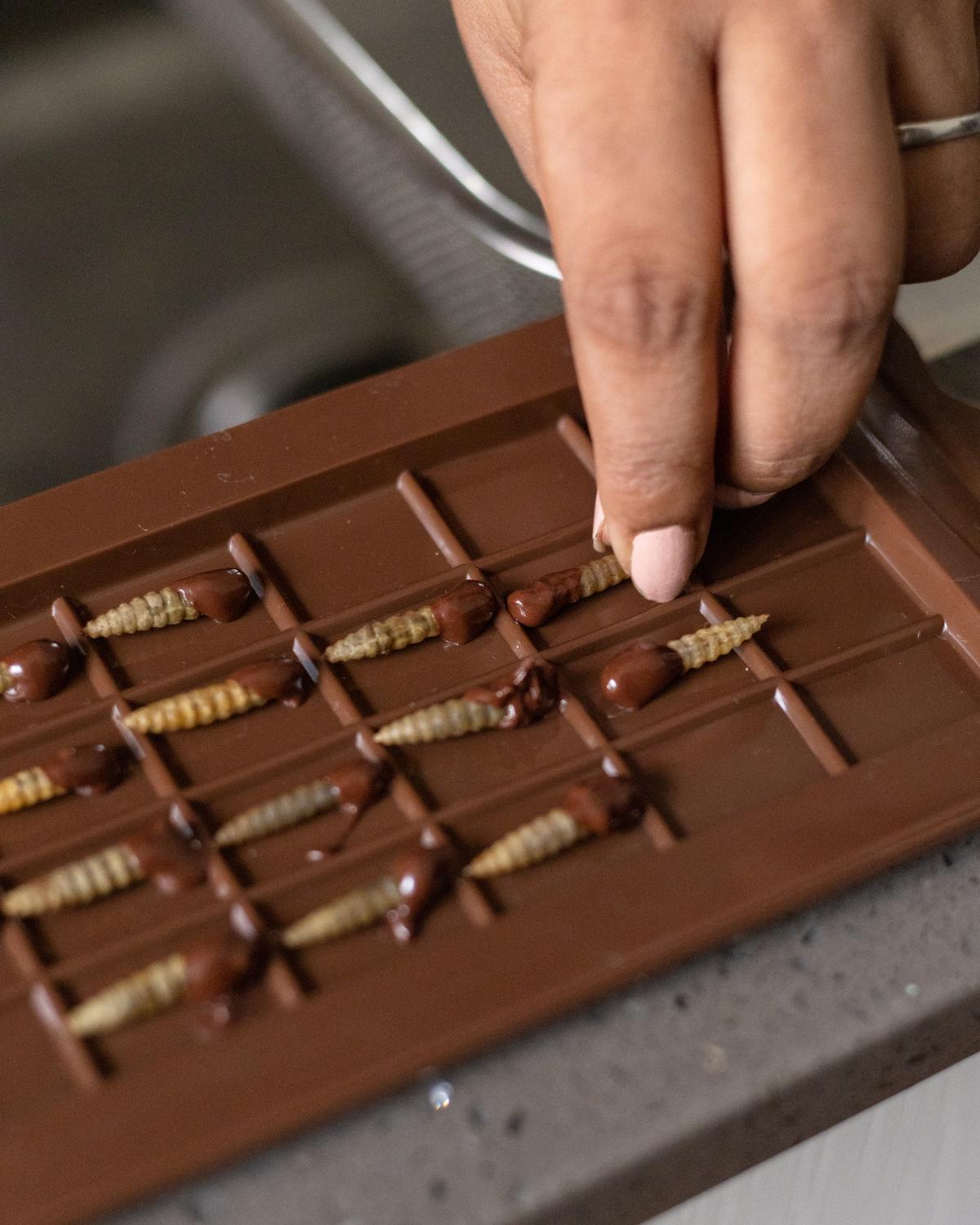
Chocolate-dipped black soldier fly larvae
| Photograph Credit score:
Courtesy The Boochi Challenge
Insect protein market
Greater than 2,300 insect species globally are thought of edible; they’re each aquatic and terrestrial. Whereas most are foraged, some at the moment are farmed on a big scale in nations such because the U.S., France, Thailand, Denmark, China, South Africa, and Canada. In 2023, Singapore-based multi-million greenback firm Entobel inaugurated its largest insect protein manufacturing facility in Vietnam for black soldier fly larvae to “produce practical insect-based substances for animal feed and well being”. In India, Insectifii in Bengaluru, additionally farms bugs for animal feed.
Vohra believes the time is true to market bugs for people, with rampant fitness center tradition, menopausal girls understanding their physique’s want for protein and, in fact, the outstanding rise of Ozempic — which requires folks to extend protein of their weight-reduction plan. Everybody needs to include 30g of protein per meal, and bugs are terribly excessive in it. The Indian weaver ant, for instance, is reported to be 55.27% protein; evaluate that with 26% in beef, 27% in rooster or 33% in rabbit.
Lobeno Mozhui, a zoologist from Nagaland College with a Ph.D within the dietary worth and medicinal makes use of of edible bugs, says, “In conventional Naga societies, bugs are various protein and power sources. They’re thought of extra helpful by way of nutrient content material than another typical meat supply. For example, after heavy guide labour, the tribal folks devour cooked dragon nymphs and water larvae to rejuvenate themselves.”
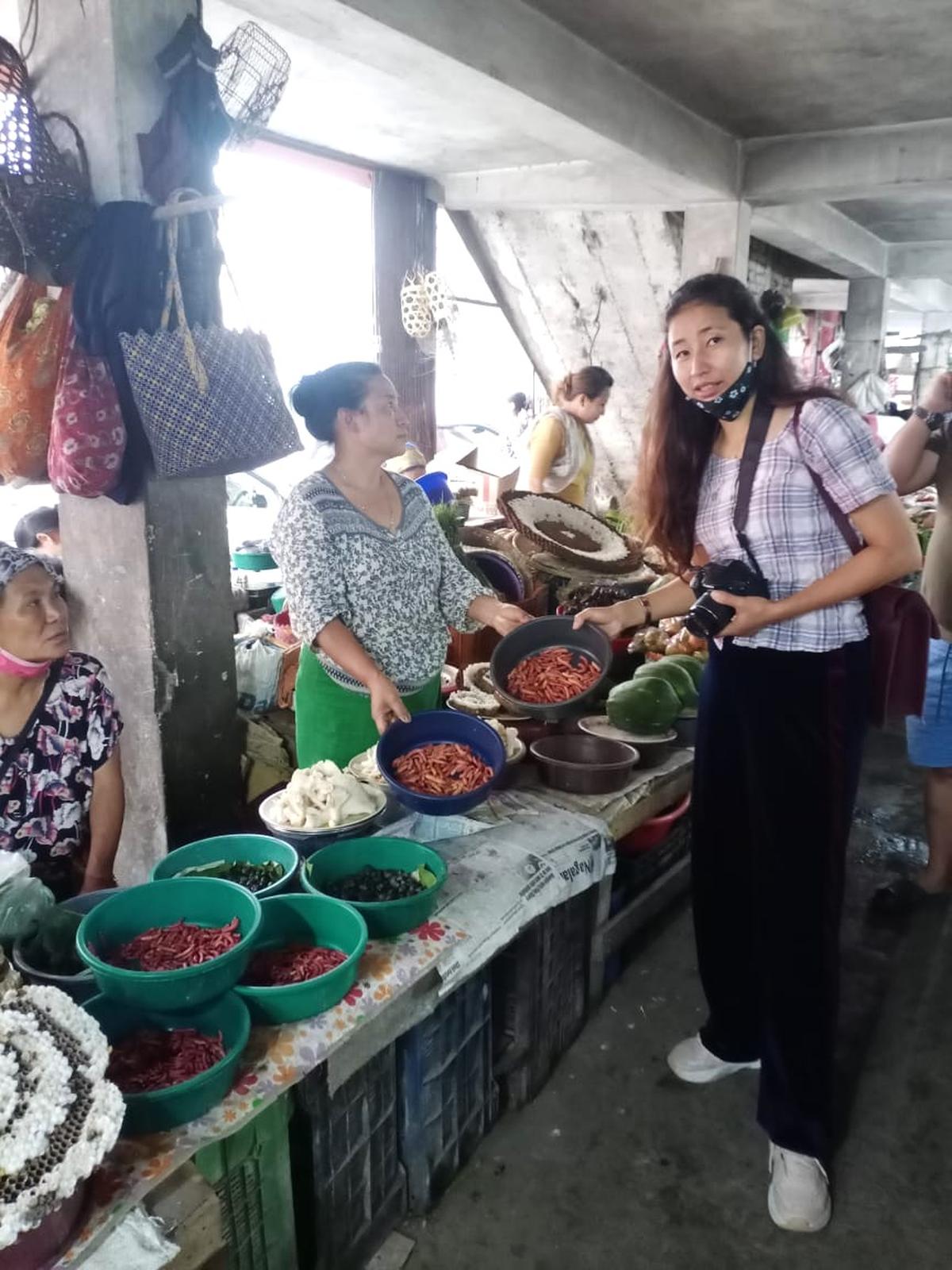
Lobeno Mozhui
| Photograph Credit score:
Particular association
She factors to how SDG 2 (Sustainable Improvement Purpose 2), a department of the United Nations that focuses on eradicating world starvation, is at present severely wanting into edible bugs as a solution to rising malnutrition, and its Meals and Agriculture Group has already began advocating edible bugs for future meals safety.
The main target just isn’t solely on bugs, however the whole conventional meals system — to attain meals safety, improved vitamin, and sustainability. “So, all of us want to come back out of the disgust issue and deal with what’s wholesome,” says Mozhui.
Mapping India’s edible bugs
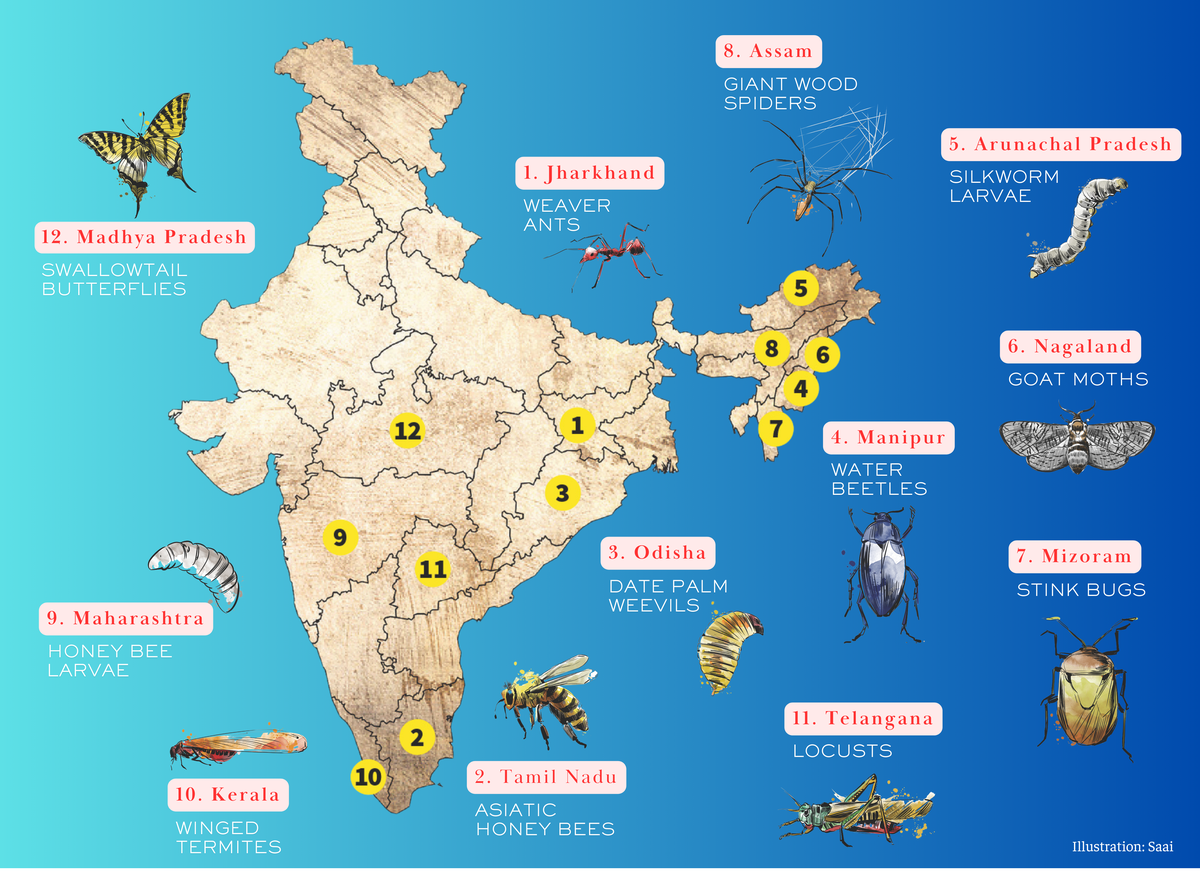
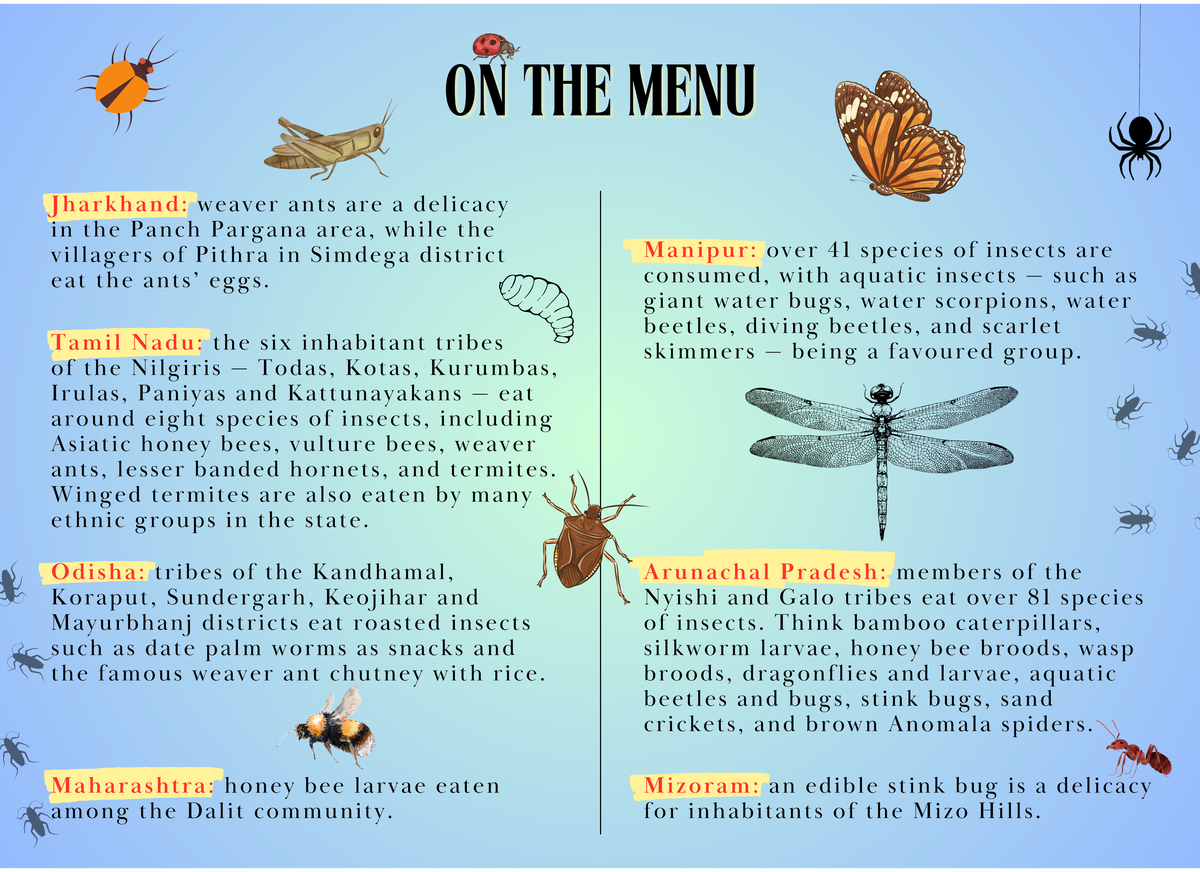
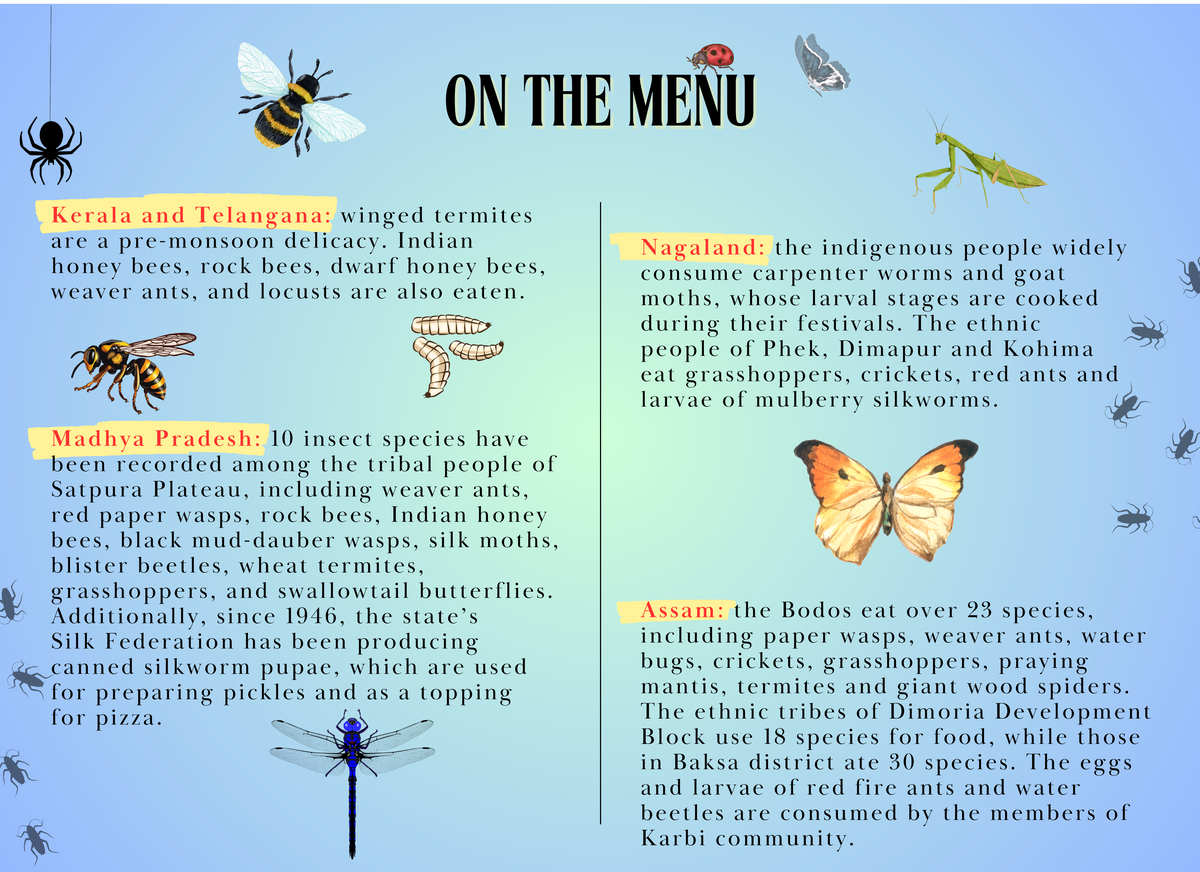
The politics of meals
Sadly, the fact is that meals in India is closely entwined with an individual’s socio-economic and political standing, and promoting bugs as a type of protein in a rustic the place being vegetarian is equated with purity appears troublesome. Mumbai-based Gitika Saikia, an Assamese residence prepare dinner, has been a long-time advocate of edible bugs. Belonging to the Kachari neighborhood, she has fond reminiscences as a baby of gathering water beetles from close by ponds and silkworm pupae from mulberry bushes to take residence. “Throughout Bihu, we’ve got a meals ritual to arrange a dish with 101 inexperienced greens. But it surely’s typically not possible to gather so many alternative varieties. So, we eat weaver ants, with the assumption that it has ingested all these greens,” she shares.
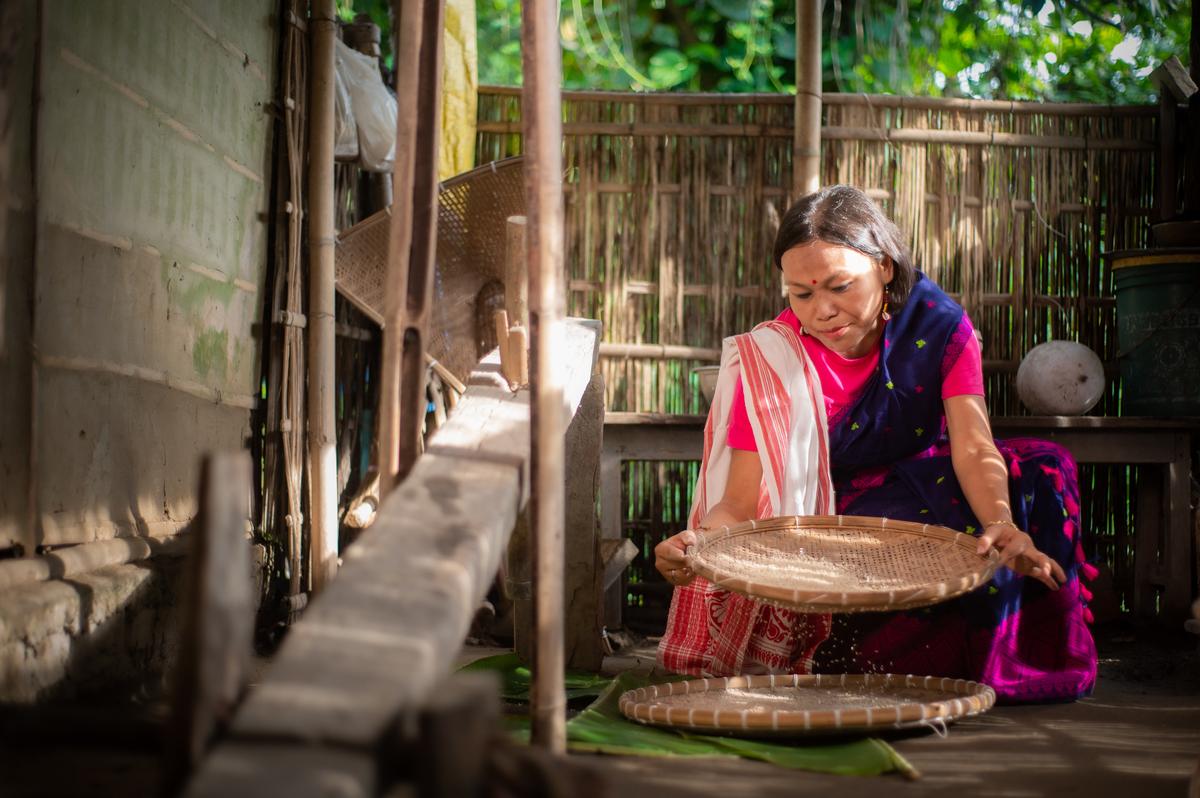
Gitika Saikia
| Photograph Credit score:
Particular association
Saikia has labored with cooks equivalent to Manu Chandra and Prateek Sadhu and eating places like The Bombay Canteen, collaborating for Assamese meals pop-ups and sharing her data of bugs. She’s even appeared on the Netflix present Menu Please in 2020. Sadly, she confronted backlash after the present was streamed, with trolls asking her to take away movies of edible silkworm pupae from her Fb web page and telling her “to return to China to eat these bugs”.
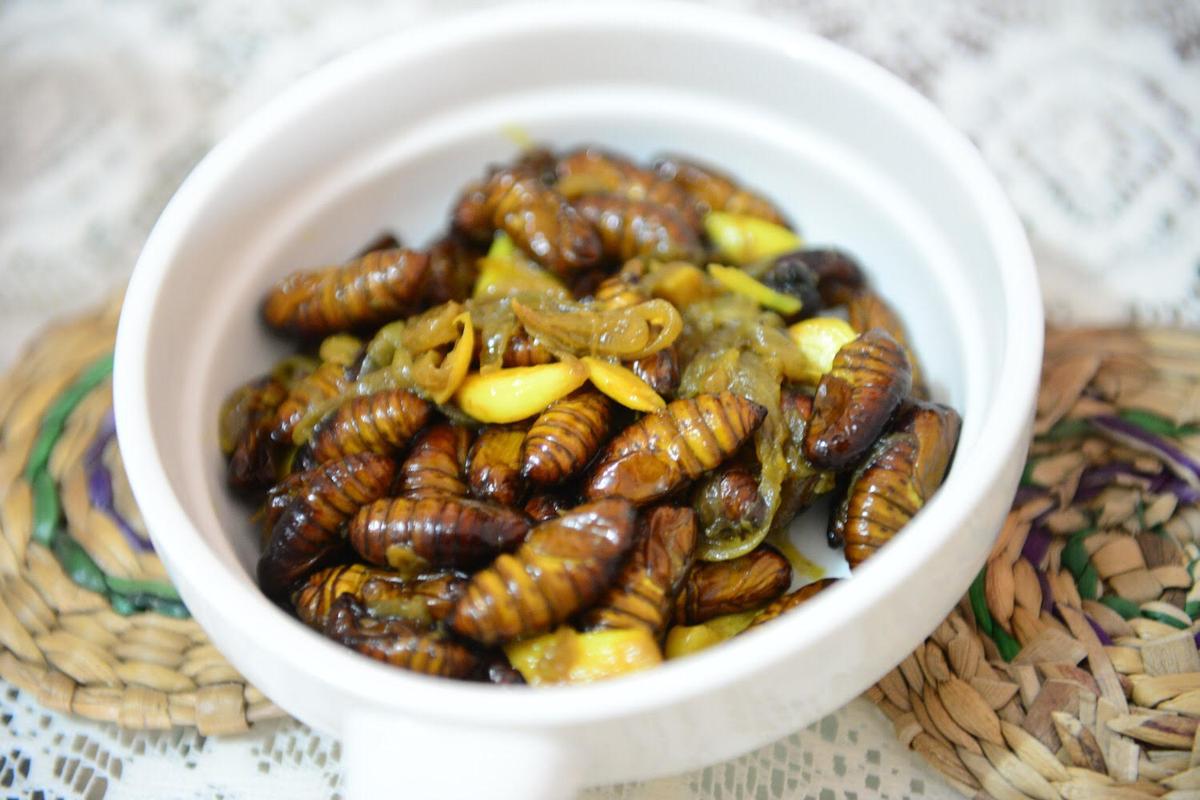
Stir-fried silkworm pupae
| Photograph Credit score:
Gitika Saikia
However she didn’t give in to stress. “I’m happy with the meals of my neighborhood and I didn’t deliver a single submit down,” she says, including that from subsequent month, she is planning to supply water beetles, silkworm pupae and weaver ants from Assam (which she needed to cease through the pandemic) and unfold the phrase on entomophagy. “This can be a custom I actually wish to revive.”
Elsewhere in Maharashtra, Shahu Patole, writer of Dalit Kitchens of Marathwada, can empathise with Saikia. “There may be fixed social humiliation of some folks due to what they eat. It’s the proper of every human to freely select what they wish to devour, but when the meals is linked to faith or politics, there’ll at all times be backlash,” he says. Whereas bugs don’t play a big position in Patole’s neighborhood’s weight-reduction plan, honey bee larvae is far coveted. They’re rigorously collected throughout summer time, when the colony is at peak manufacturing, and are eaten tossed with pink chilli powder and onions.
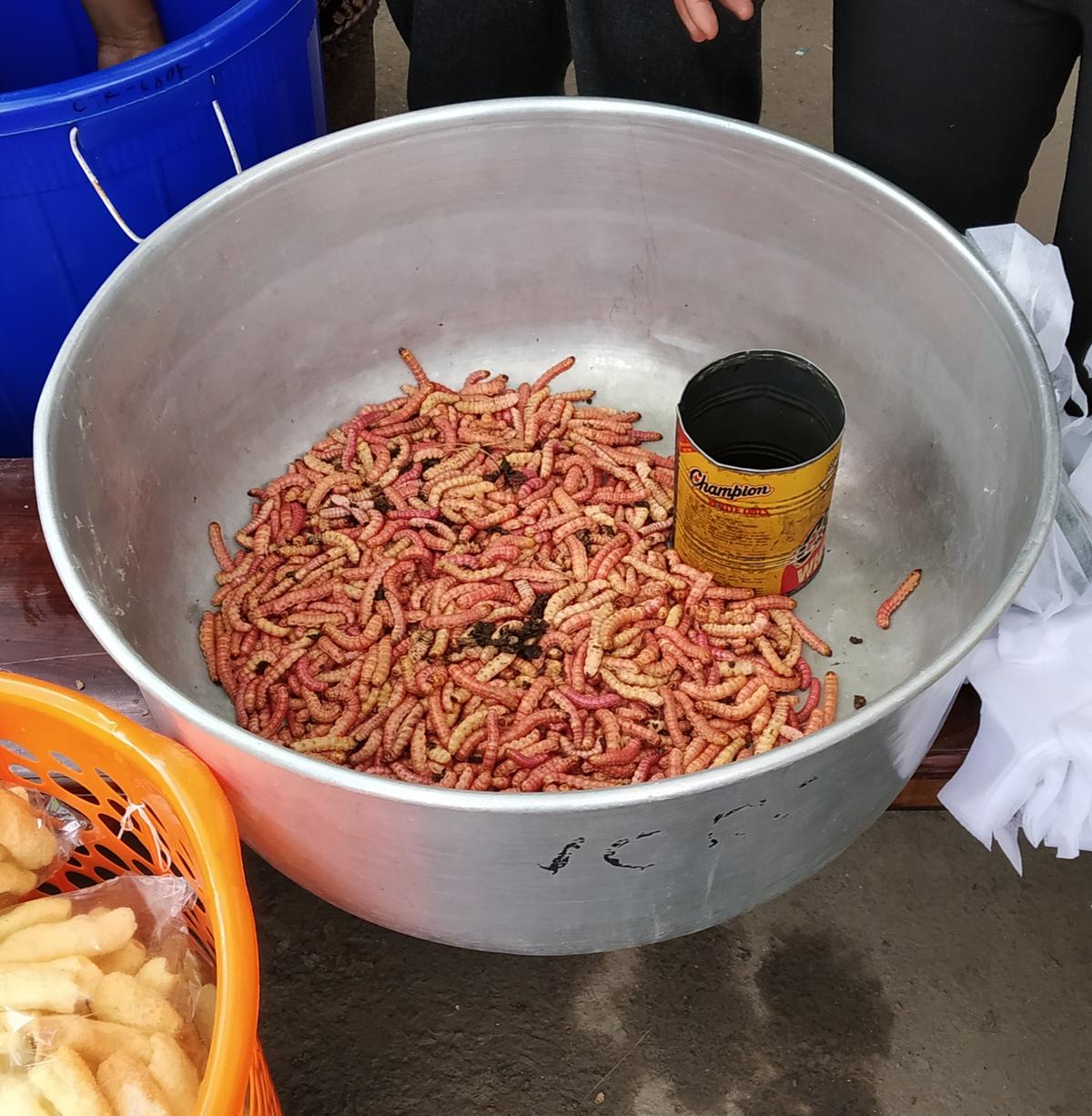
Honey bee larvae
| Photograph Credit score:
Shahu Patole
Nevertheless, what Patole actually opened my eyes to is an issue extra covert than the apparent judgement that the “brahmanisation’ of India’s meals has resulted in. It’s the situation of when Dalits (and others) begin internalising this dialogue and really feel ashamed of the meals traditions they grew up with. “The disgrace Dalits really feel about their meals is essentially depending on the area they dwell in, making it clear it’s society that creates the issue.”

“In India, the idea of edible bugs remains to be rising. Cultural preferences and dietary habits play important roles on this hesitation. The event of insect-based meals [such as snacks and protein bars] faces challenges, together with regulatory hurdles. Nevertheless, as world curiosity in sustainable protein sources grows, it’s doable that Indian entrepreneurs and corporations might discover this sector sooner or later. Additionally, whereas the Indian restaurant scene has not extensively embraced edible bugs, there are area of interest cases [like Papa’s in Mumbai and Farmlore in Bengaluru].”Vicky RatnaniChef
Inside conventional kitchens
There may be little to be ashamed of, particularly when consuming bugs has lengthy been an integral a part of culinary heritage amongst many communities throughout India. From Nagaland, Arunachal Pradesh and Jharkhand, to Tamil Nadu and the Andaman Islands, over 500 varieties are eaten, in keeping with Ashoka Belief for Analysis in Ecology and the Surroundings (ATREE). Whereas winged termites and weaver ants are the most typical, grownup bees and bee larvae, wasps, crickets, silkworm pupae and larvae, beetles, grasshoppers, locusts, snails and big water bugs are all eaten.
The strategies of figuring out, gathering, and making ready bugs are a part of tribal customized, and infrequently, they’re cooked in comparable methods — largely fried or roasted with spices, or made right into a chutney. For example, in Nagaland, bee larvae are roasted and eaten like a snack, in Tamil Nadu winged termites are fried and eaten as a aspect dish, in Chhattisgarh, ant chutney is a delicacy, and in Manipur and Mizoram, silkworm larvae and pupae are eaten uncooked with salt and chilli.
Ati Atier from Kohima began Oyas Umami, a catering firm in Goa in 2019, the place she serves up a contemporary tackle her native Naga delicacies. She grew up together with her grandparents who have been farmers from Mopungchuket village. “Each time we went out to the fields, we might catch bugs to deliver again to eat. We ate massive bellied spiders and cicadas through the onset of summer time. I beloved gathering water beetles that swam within the ponds for dinner,” she says, including how they typically grew what the larvae wish to eat — like mulberry for silkworm larvae.

Ati Atier
| Photograph Credit score:
Particular association
Atier remembers catching weaver ants from mango bushes, shaking their nests with a pole and gathering them once they fell. One of the best half is that bugs are nonetheless an enormous a part of their weight-reduction plan. “Within the markets, we’ve got grasshoppers, locusts, wooden worms, rhino beetles, winged termites, and hornets. Silkworm larvae are served in eating places. The youth nonetheless eat them,” she says. And with vacationers fascinated about attempting them, she hopes the curiosity will unfold.
Whereas there are at the moment no nutritionists in India severely recommending bugs as a type of protein, loads of research show their dietary supremacy. Particularly following a 2013 paper printed by the U.N.’s Meals and Agriculture Group titled ‘Edible Bugs: Future Prospects for Meals and Dietary Safety’, which steered that bugs have the potential to change into one of many staple meals of the long run.
A research by life science consulting agency Halloran and others said that “edible bugs not solely fulfil each day power and nutrient necessities, but in addition comprise important amino acids, polyunsaturated and monounsaturated fatty acids, zinc, iron, and fibre. As well as… [they] additionally comprise practical parts like chitin, phenols, antioxidants, and antimicrobial peptides, which have potential advantages for immune help and illness prevention in people”.

Ants on the dinner plate
Mumbai’s newest ‘it’ restaurant, Papa’s from Starvation Inc. Hospitality — a 12-seater led by chef Hussain Shahzad, the place your fellow visitor may very well be Dua Lipa (the British-Albanian singer dined there earlier than her live performance final November) — has pink ants on their menu. ‘Bugs Bunny’ is a grilled rabbit marinated in sundried weaver ants from Jharkhand. “We supply our pink ants from a candy potato farmer. He collects and dehydrates them for us. The dehydration course of helps prolong their shelf life,” Shahzad explains.

Bugs Bunny
| Photograph Credit score:
Particular association
Whereas he believes that bugs are going to be a future meals, he’s extra lifelike about when they are going to be adopted. “I do assume bugs, particularly ants, will change into a sustainable supply of protein sooner or later. With the way in which issues are [at the moment], it’s not one thing that’ll occur within the subsequent 10 years, however possibly within the subsequent 20 or 30 years.” For now although, he says, “They carry style, texture, and a way of journey to our tasting menu at Papa’s.”

Chef Hussain Shahzad
| Photograph Credit score:
Particular association
Raaj Sanghvi, CEO of Culinary Tradition, a platform for restaurant rankings, chef awards, and culinary content material manufacturing, added ‘Bugs Bunny’ to his Greatest Plates of 2024. “Bugs have lengthy been part of advantageous eating menus at a few of the world’s prime eating places. Alex Atala, Brazil’s most well-known chef, has been a vocal advocate of entomophagy. Once I dined at his two-Michelin-starred DOM in São Paulo, he served me a big Amazonian leaf-cutter ant positioned on a slice of pineapple as a starter,” he says. “However bugs haven’t achieved mainstream acceptance in India but. Cooks and eating places might want to do extra to shift perceptions for it to change into the following massive meals pattern.”
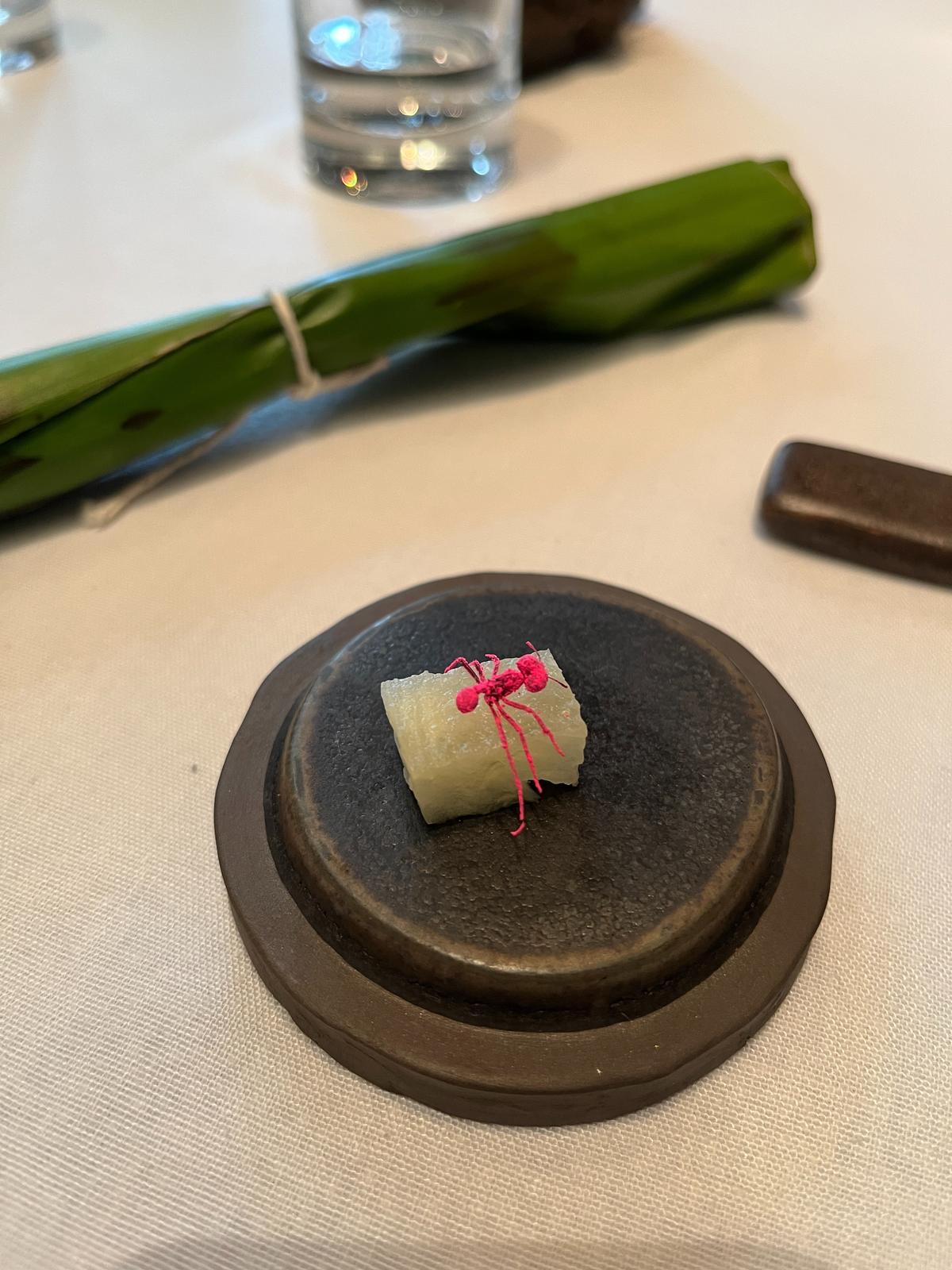
Amazonian leaf-cutter ant positioned on a slice of pineapple at two-Michelin-starred DOM in São Paulo
| Photograph Credit score:
Raaj Sanghvi
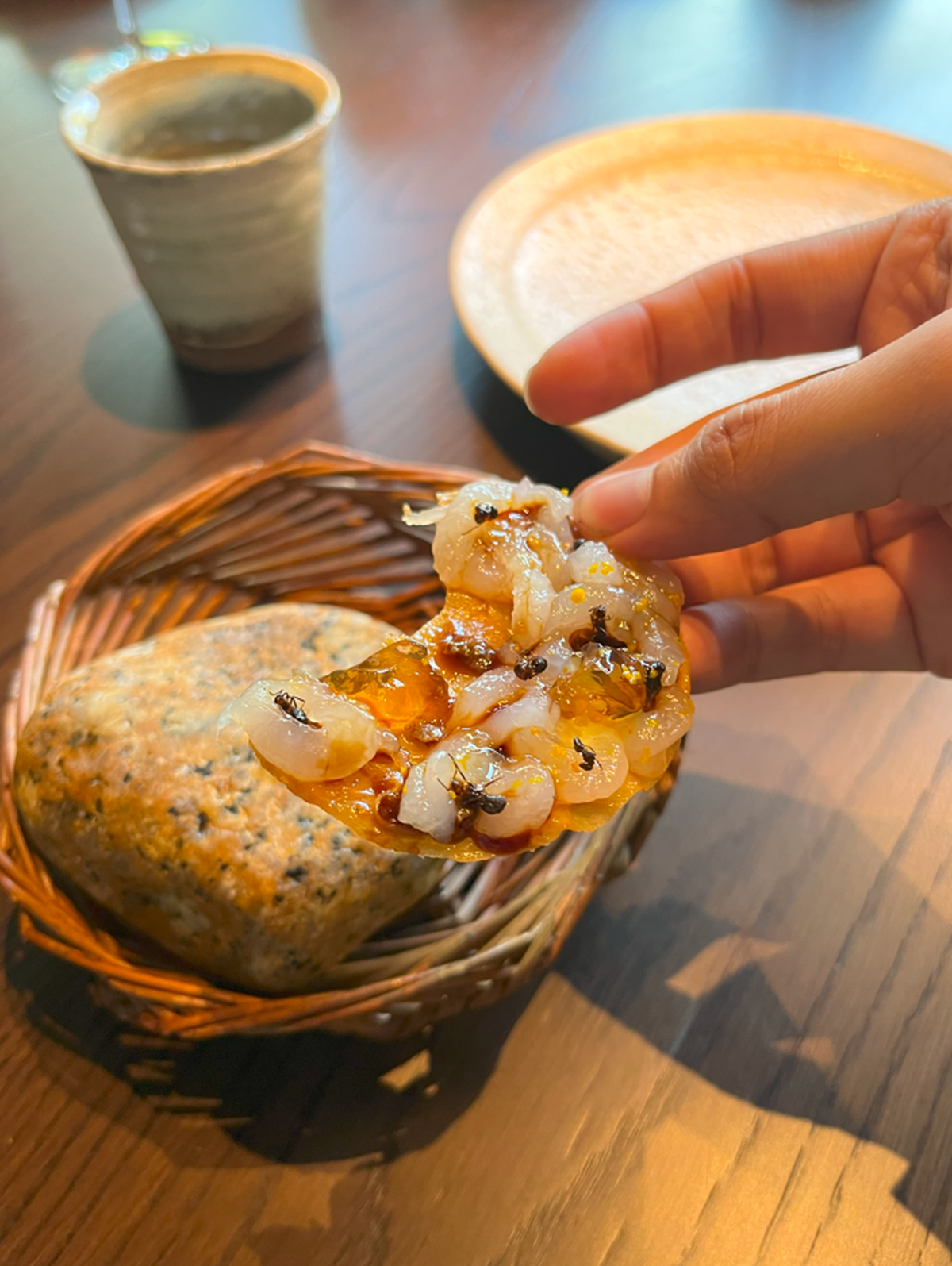
Ants on a Shrimp at Noma’s Kyoto pop-up
| Photograph Credit score:
Raaj Sanghvi
International curiosity
Bugs equivalent to weaver ants and winged termites, that are conventional delicacies world wide, from Brazil to Thailand, are a part of a rising world pattern in sustainable consuming. In Denmark, René Redzepi — co-owner and head chef of Noma, lengthy thought of the very best restaurant on this planet — may very well be the explanation why bugs at the moment are obtainable in supermarkets throughout Europe. His undertaking, ‘Future Staples of Meals’, contains bugs equivalent to wasps, every kind of ants and crickets amongst many others. Noma’s gastronomic experiments have included bee mayonnaise, grasshopper garum, salted larvae, fermented cricket paste and crème fraîche with dwell ants.
Right now, cricket flour is promoting off the cabinets within the U.Ok. and bug burgers might be purchased from supermarkets within the Netherlands. In Thailand, bugs are so widespread that they should import them though there are 20,000 cricket farms producing 7,500 tonnes annually. Within the U.S., you may have bugs (largely crickets) in chips, cookies, and protein bars. They’re additionally floor and processed into burgers, schnitzels and nuggets.
Combating diner aversion
ATREE has made it a precedence to analysis edible bugs for meals safety. They’ve documented the numerous species throughout the Northeast to protect the standard data of their consumption, and are growing other ways, equivalent to drying and grinding them into powder, to garner curiosity. Priyadarsanan Dharma Rajan, a researcher and senior fellow who, together with three others, ‘found’ three species of edible stink beetles final yr, says, “Not solely in Northeast India, however many indigenous and a few mainstream communities in the remainder of India eat bugs. We have now documented greater than 500 species being consumed by folks, nearly all sourced from the wild. However a surge in demand from the skin market may result in overharvesting from the wild, and will pose a menace to insect populations. So, it’s essential to develop rearing and agronomic strategies for a wider vary of species.”
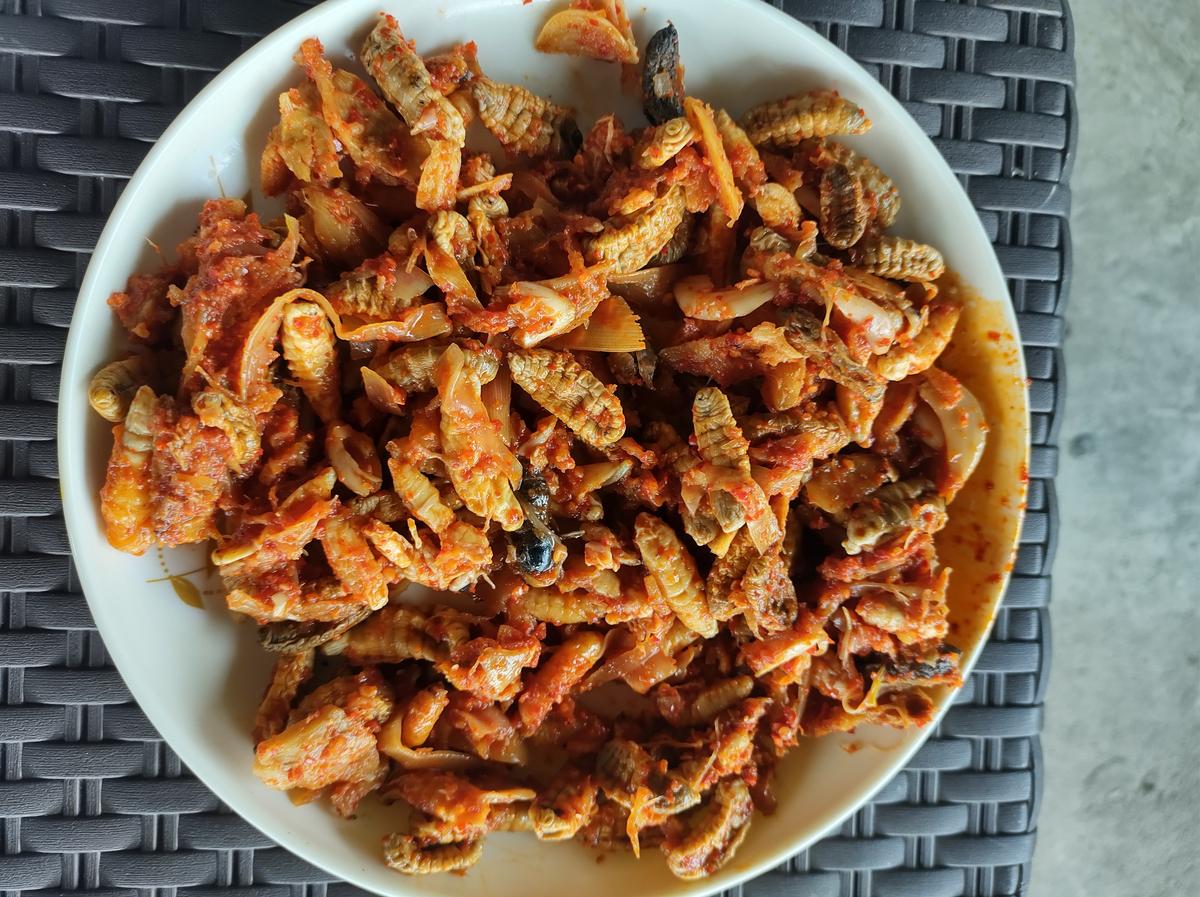
Large hornets with sichuan pepper and tree tomato
| Photograph Credit score:
Courtesy The Boochi Challenge
He feels India must be ready for the worldwide edible insect market, even when they don’t change into mainstream right here. “With its tropical local weather characterised by beneficial sizzling and wet seasons, the nation has good potential for insect farming. Furthermore, the provision of natural waste can function a available and sustainable feed supply for them. These elements contribute to India having a really excessive potential for growing insect farming.
Most just lately, pink weaver ant chutney or kai chutney from Odisha’s Mayurbhanj district was awarded a geographical indication (GI) tag. It looks like it’s time to put squeamishness apart and dig in.
The author is a permaculture farmer who believes consuming proper can save the planet.
Printed – February 07, 2025 03:49 pm IST






